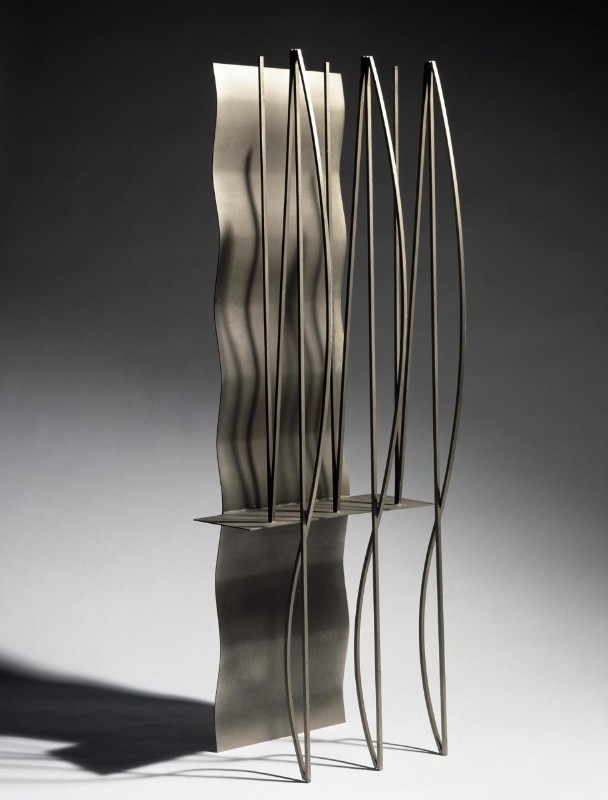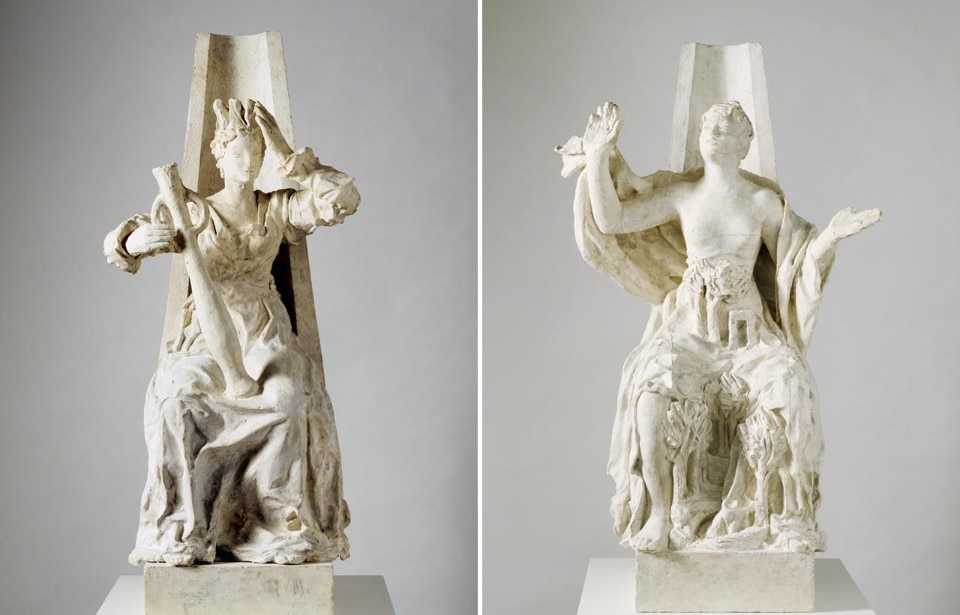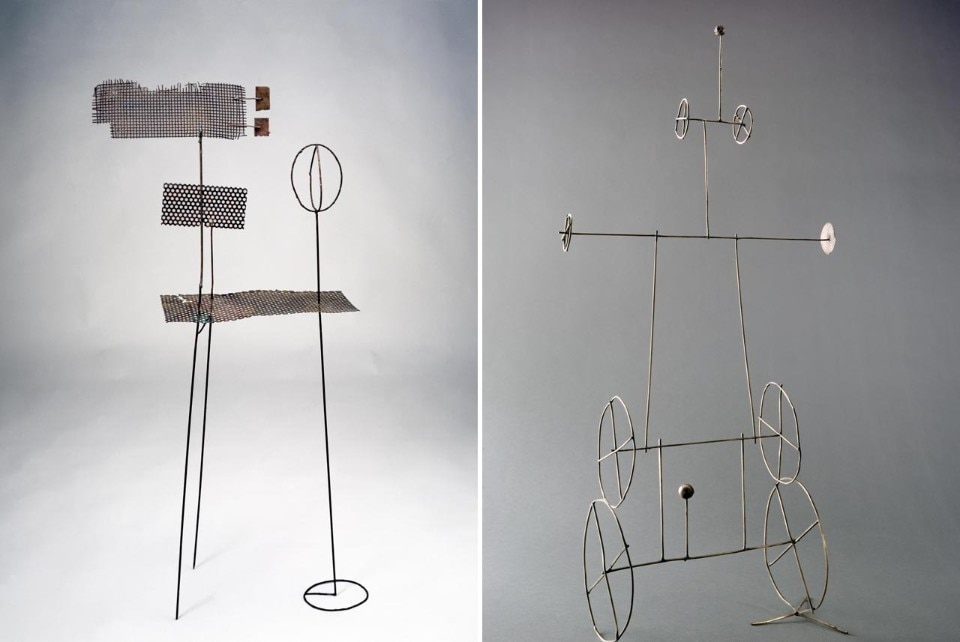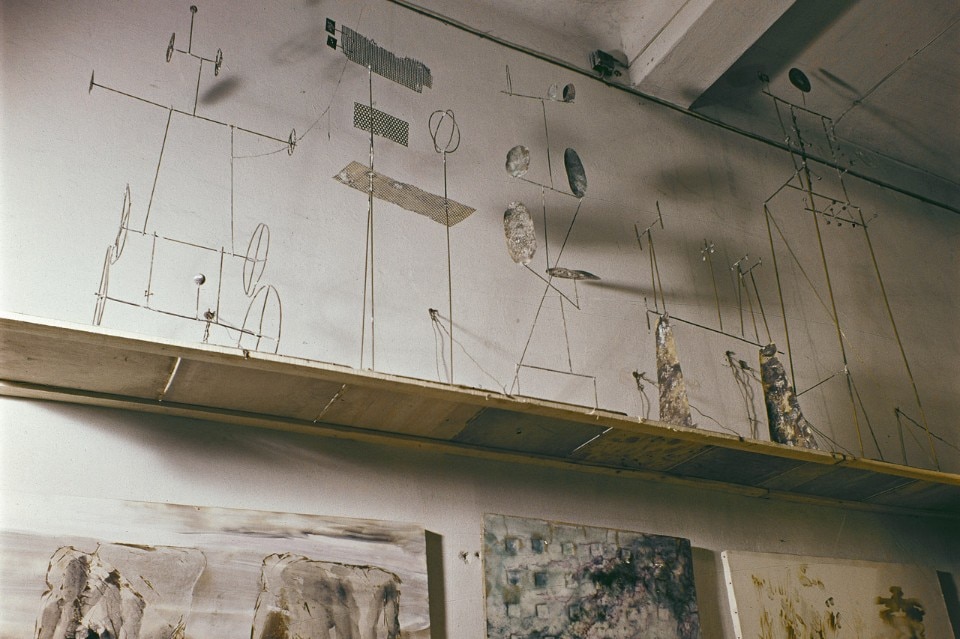Of the two above-mentioned essays, we propose the first below, and you will find the second one in Domus’ July / August issue.

Originally published in Domus 392/1962
They are still called the figurative arts, but the beauty of reality is long gone. Apart from a few wizened masters, no great artist today worthy of representing our delirious age will place a canvas or a trestle in front of reality. On occasion, we do indeed hold the figurative world on a string and, like children, pull it along behind us, or we give a title from nature to some graphic brainwave. But these are expedients. On the other hand,
Dada and neo-Dada, ethereal will-o’-thewisps, share a common axiom: the plastic arts do not descend from drawing. As perturbing as mirages, they appear and then are gone. And then Tàpies discovers the world of plaster, and lumps and cracks, with the vision of a sensitive spider – dramatic insects with the eyes of Tobey and Pollock. Other paths open up in clearings filled with restless agitation. Guarding each route, artists with clearly set ways and confines demand a toll. With the licence of critics and dealers, and thus assisted in their references and classifications, they repeat the accepted dogma until kingdom come, so as not to betray themselves.

Authentic artists. Dubuffet, Fontana.

We should surely be able to justify these restless interludes, this disquieted incoherence that may appear immoral. The paradigm of this certainty-uncertainty) is Picasso. From morn to eve we are intent on the countless disguises in which art relives, and this delirium recalls the dying man who, in his final instant, sees the events of his own life in a thousand mirrors. So it is that this licence no longer appears to us as such, but simply as a tragic, unwitting warning against the forthcoming catharsis of this extenuating civilisation of ours. And apparent incoherence finds justification in a pained, morally absolved “condition”.
Fausto Melotti
July 09 2015 – January 17 2016
Fausto Melotti
curated by Eva Fabbris and Cristiano Raimondi
NMNM – Villa Paloma
Monaco


